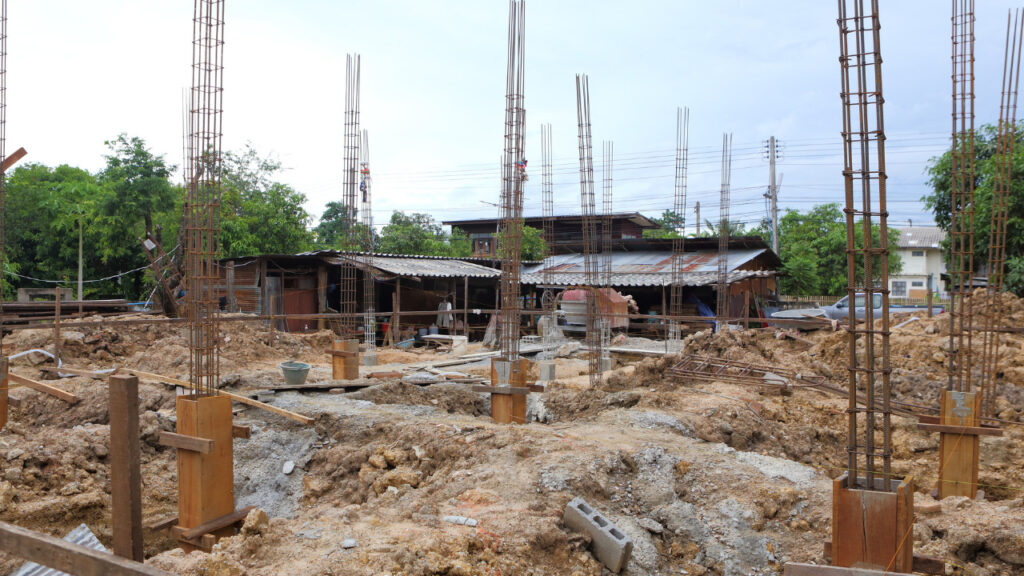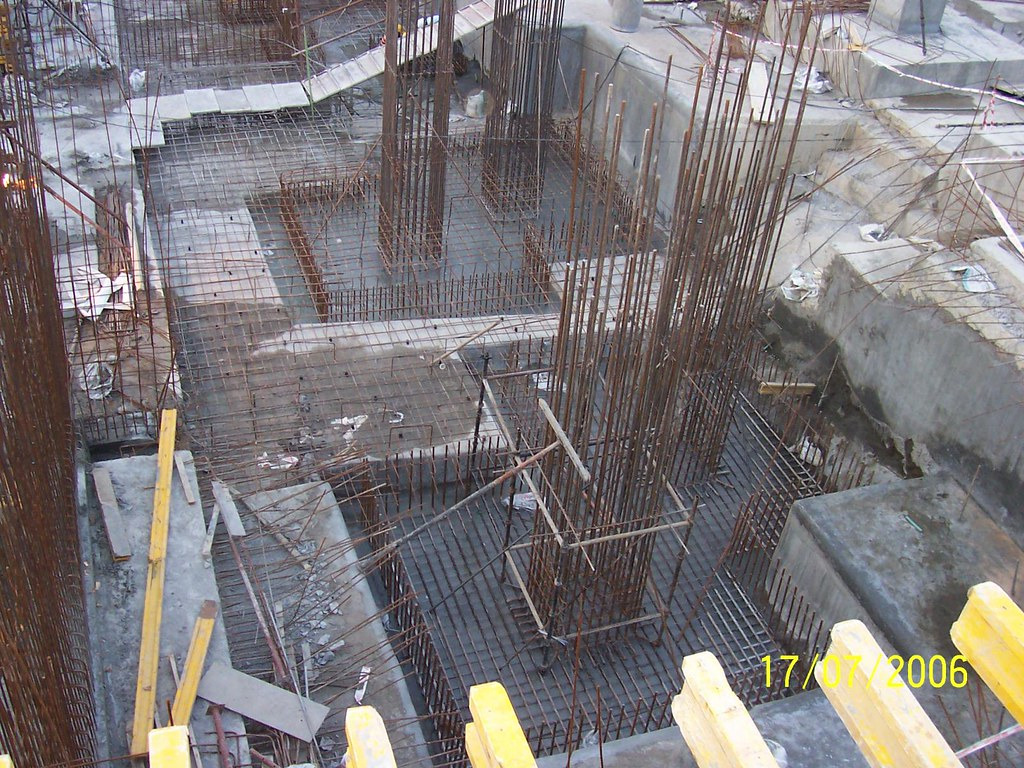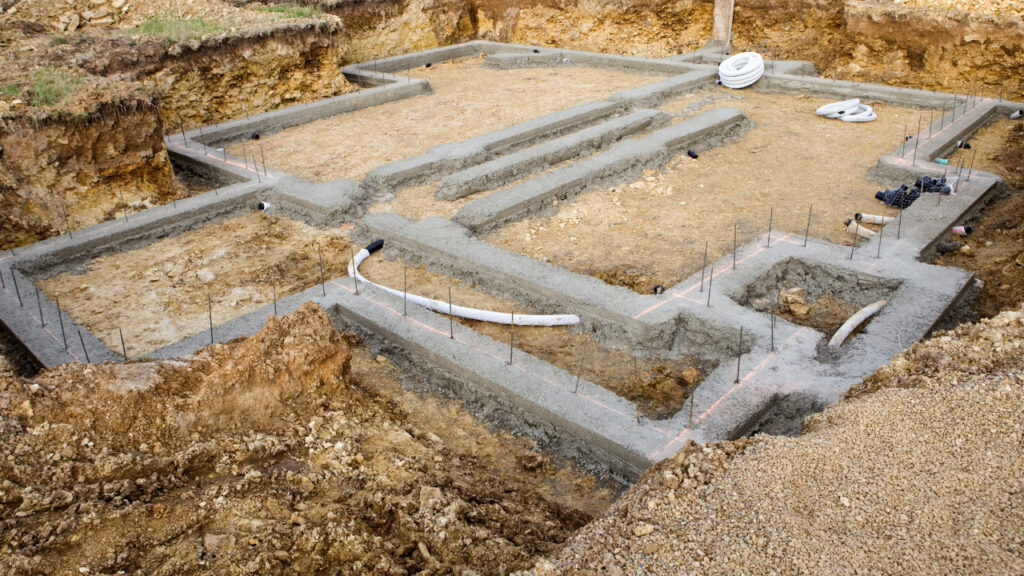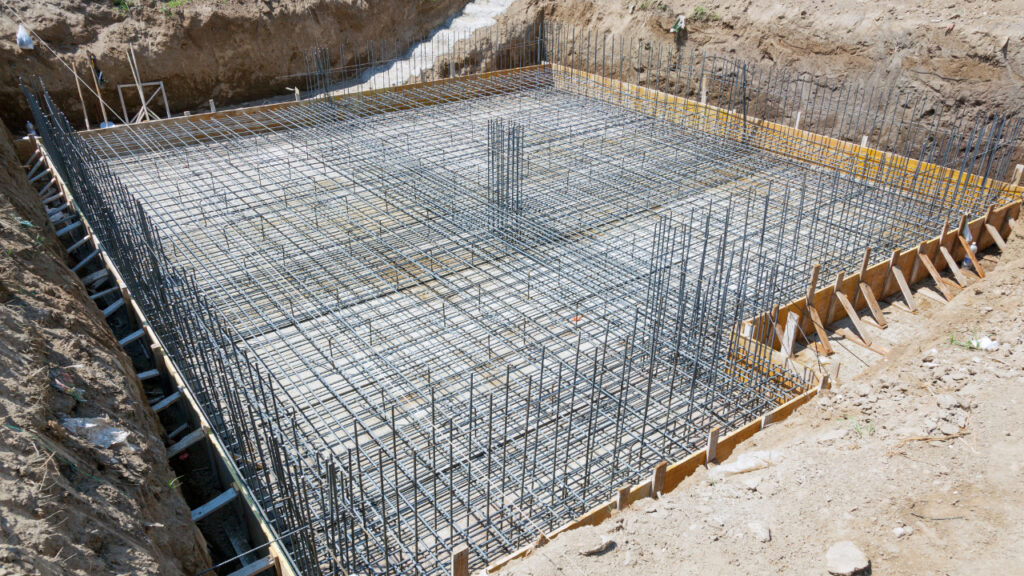Are you looking for the most suitable foundation for your building? Whether you are constructing a house or a commercial building, choosing the right foundation among the multiple types of foundations is a very difficult task
A foundation not only provides structural support to your building but also ensures the stability of the constructed building for a longer period of time. There are different types of foundations. Generally, foundations are divided into two main categories based on their load-transferring capacity to the ground. These foundations are often named shallow foundations and deep foundations.
Let’s discuss the shallow foundation; what is shallow foundation, why it should be used and what are the types of shallow foundations.
Table of Contents
What is the Shallow Foundation
A shallow foundation transmits the loads of a building to the earth extremely close to the surface, as opposed to transferring it to deeper layers of soil or rock. Many small, simple constructions, such as homes, garages, and sheds, have relatively shallow foundations.
Being an ideal choice as a home foundation, these foundations are cost-effective because they require less excavation and less material. Shallow foundations are less technical and suit best on light constructions. The maximum depth of the shallow foundation is less than 6 feet. A foundation is considered a shallow foundation when its width as a whole is greater than its depth.
4 Types of Shallow Foundation
Shallow foundation has many sub-types in construction depending upon multiple factors such as soil condition, location, load-bearing capacity, or size of a building. These subtypes include;
1. Isolated Footing/ Individual Footing
You may choose to make use of an isolated footing as your foundation to provide support for a single column or pier. Column footing, pier footing, and pedestal footing are some of the other names that are used to refer to isolated footing. In most cases, it is placed beneath the base of the column or pier, and it is rectangular or square. As a standard practice, the footing is normally constructed out of concrete and reinforced with steel rebar for additional strength.

Footings that are segregated from the ground are typically used in areas where the earth is not strong enough to support the weight of the building. This also applies in situations where the building or other structure in question is not immediately connected to the structure that is being discussed.
This foundation style is most suitable for usage in buildings in which the columns are responsible for bearing the majority of the building’s weight. To provide support for these columns, it is advised that individual footing be utilized. However, the overall size of each footing is determined by the total load that is being carried by the machine as well as the load-bearing capacity of the soil.
2. Combined Footing
Cantilever footings or combined footings, a type of shallow foundation is also a viable option for supporting two columns. Spreading the footing could cause the building to collapse if the property lines are too close together; therefore, these devices are utilized to prevent the loads from overlapping and causing the building to collapse.

With the assistance of an inner column and a combined footing, it is possible to distribute the weight to the wider soil area without any imbalance. These footings are usually rectangular or trapezoidal in shape. This type of shallow foundation is mostly used to construct buildings in such areas where the soil load-bearing capacity is limited.
3. Strip Footing/ Continuous Footing
Strip footing is installed when a wall or row of columns is to be provided. You could hear it called wall footing or trench footing as well. Typically, the load-bearing walls are supported by strip footing. Taking advantage of the fact that there is already a thin layer of concrete embedded beneath the walls that support the building is the purpose of this. Changes can be made to the positioning of this concrete strip as well as its dimensions, depending on the width that is required.

In cases where the soil cannot adequately bear the load of the building, this sort of footing is usually used. Strip footing or continuous footing helps keep foundations from sinking by distributing loads across a wider region. The design allows the footings to overlap, as they are spaced so closely together. To ensure the stability, structural integrity, and longevity of a building, it is crucial to have a solid foundation capable of supporting a load-bearing wall.
4. Raft or Mat Foundation
Another sub-type of shallow foundation is the mat foundation, which is also known as the raft foundation. This foundation is used to distribute the structure’s load over a large area. It is particularly used in such situations where the soil has low bearing capacity. So, mat foundations minimize the difficult settlement of heavy super structures on weak soil.

It is not necessary to dig deeper into the ground because the foundation is located at a shallow depth. In contrast to isolated footings, a raft or mat foundation consists of a single continuous slab that extends over the entire length of the building’s footprint. This type of foundation can provide support for columns and walls that are particularly heavy.
Raft foundations are preferred in the construction of structures in situations where there is a significant risk of damage to isolated footings as a consequence of heavy structural weight. An additional application for this kind of base is on soils that have a low capacity for supporting weight. This foundation type, on the other hand, is not going to be effective in regions where the water table is higher than the surface of the soil.
Choose Best Shallow Foundations
Shallow foundations are suitable for buildings that have relatively low loads and soil conditions. When designing and constructing shallow foundations, it is necessary to give careful consideration to the type of soil, the load-carrying capacity, and the possibility of settlement. The intended purpose of the building, the soil’s condition, and the load of the structure are all factors that engineers take into consideration when deciding on a foundation type.





